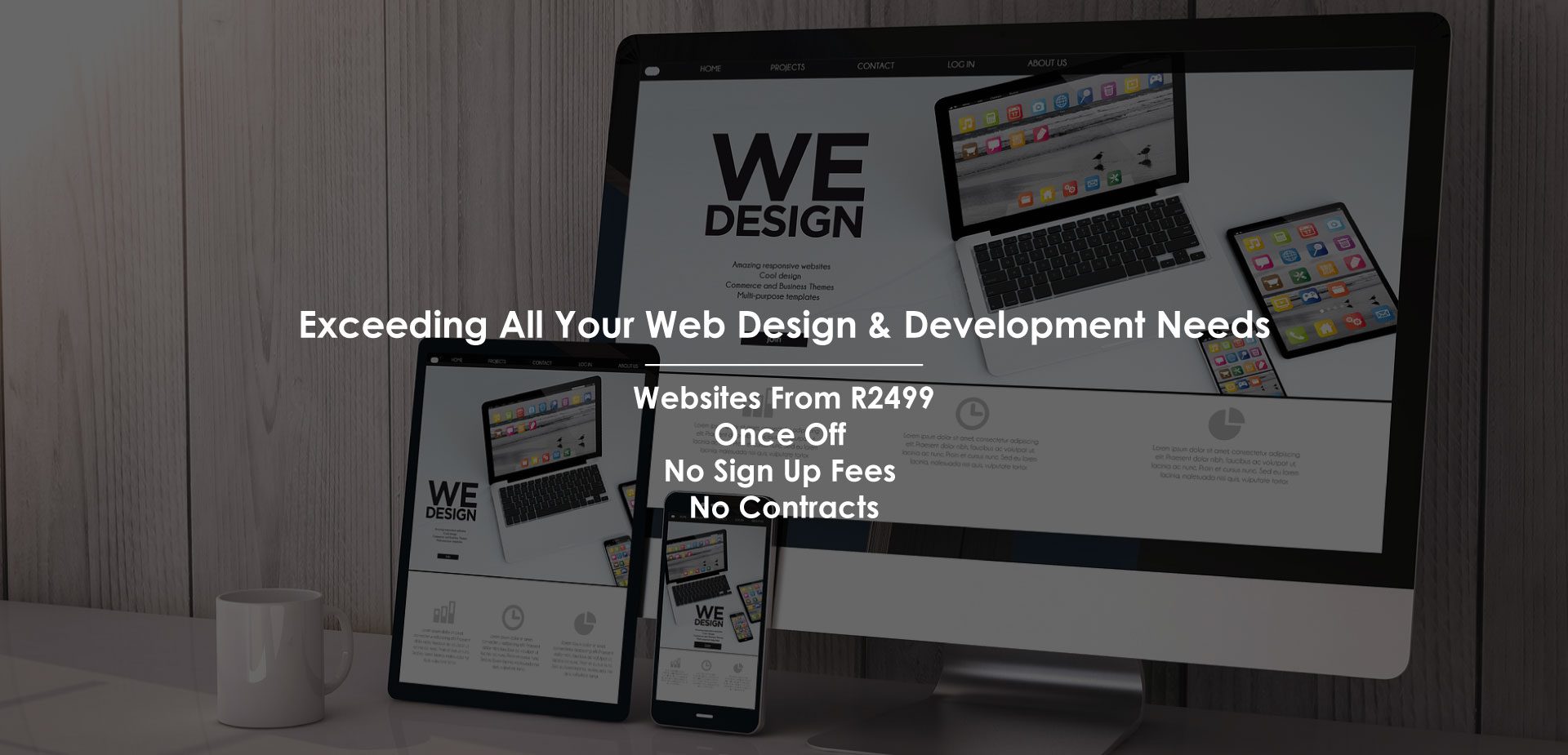The Complete Overview to Finding Top Solutions in Web Design Pretoria
The Complete Overview to Finding Top Solutions in Web Design Pretoria
Blog Article
A Comprehensive Overview to Responsive Website Design Techniques
Receptive web style has ended up being a necessary part in the development of digital platforms, allowing for a seamless user experience throughout a plethora of devices. The landscape of web style is regularly developing, elevating inquiries regarding the future of responsiveness and the strategies that will certainly specify it.
Recognizing Responsive Web Layout
Responsive web layout (RWD) is a technique that makes sure a web site's format and web content adapt perfectly across a variety of devices and screen sizes (Web Design Pretoria). This design approach is crucial in today's digital landscape, where users gain access to websites from mobile phones, tablets, laptops, and computer. RWD enhances user experience by permitting an internet site to keep performance and appearances, no matter the tool being utilized
An essential component of RWD includes liquid grids that use loved one devices, such as portions, as opposed to repaired systems, to specify layout elements. This flexibility allows pictures, text, and other elements to resize proportionally, providing an optimal viewing experience. Furthermore, media queries are used to use different styles based upon gadget qualities like screen width and alignment. This approach guarantees that the site's layout is customized to the particular requirements of users, improving usability.
Additionally, RWD adds favorably to browse engine optimization (SEARCH ENGINE OPTIMIZATION) by promoting a single, constant URL for a web site, which streamlines web link sharing and indexing. As mobile phone use remains to increase, recognizing and executing responsive website design is essential for companies aiming to reach a broader target market and improve total internet performance.
Secret Principles of Responsive Layout
To create an efficient responsive layout, several key principles should be taken into consideration. This implies developing for the tiniest displays initially and considerably enhancing the format for bigger gadgets.
Second, versatile grids and designs are important. Using a grid system that adapts to various screen dimensions enables an unified circulation of web content, making sure readability and functionality across gadgets. This flexibility is complemented by the usage of loved one units, such as ems or percentages, instead than fixed pixels.

Last but not least, prioritizing material hierarchy is crucial. Clear and rational organization of web content enhances individual experience, guiding site visitors via the website effortlessly, despite the device made use of. Web Design Pretoria. By adhering to these principles, designers can develop sites that are not just aesthetically appealing however likewise functional and user-centered across all tools
Techniques for Liquid Layouts
Fluid layouts are vital for developing adaptive internet experiences that seamlessly adapt to various screen sizes. By using percentage-based widths as opposed to dealt with pixel values, designers can guarantee that aspects on a web page resize proportionally, keeping aesthetic consistency throughout tools. This strategy promotes flexibility, permitting web content to stream and adjust as the viewport changes.
One effective method for achieving fluid formats is to employ CSS Flexbox or Grid systems. These CSS modules enable developers to create responsive frameworks that can easily resize and reorganize based on the available area. Flexbox succeeds in one-dimensional formats, while Grid is optimal for two-dimensional plans, providing higher control over positioning and placement.
An additional method includes using media inquiries to specify breakpoints where changes are essential - Web Design Pretoria. By defining various designs for various screen sizes, developers can change design residential or commercial properties dynamically, making sure ideal functionality and aesthetic allure
In addition, integrating loved one devices like ems or rapid eye movements for font sizes and spacing can even more enhance fluidity, as these systems scale based upon individual settings or moms and dad components. With each other, these methods help with the development of liquid layouts that promote an appealing individual experience across varied devices.
Maximizing Images for All Devices
Images play an essential duty in website design, and maximizing them for various tools is vital for enhancing efficiency and individual experience. To achieve this, developers ought to use responsive photo techniques that guarantee photos display appropriately across different display sizes and resolutions.
One reliable technique is using the HTML" component, which permits defining multiple picture resources based on the screen problems. By utilizing 'srcset' attributes, designers can give different picture resolutions, enabling the web browser to pick the most proper one for the customer's device.
Furthermore, implementing appropriate documents formats is important. Styles such as JPEG, PNG, and WebP each offer unique functions and can significantly affect packing times. WebP, as an example, offers exceptional compression, bring about smaller file dimensions without compromising high quality.
One more essential aspect is picture compression. Devices like TinyPNG or ImageOptim can minimize file dimensions, enhancing packing speed while preserving visual stability. Utilizing CSS for background pictures can streamline loading as they can company website be adjusted much more fluidly across devices.
Ultimately, optimizing images not only enhances website efficiency yet additionally adds to far better customer involvement and retention, making it an essential method in responsive website design.
Keeping and examining Responsiveness
Making certain a smooth individual experience across various tools needs persistent screening and maintenance of responsiveness. The very first step in this process is to make use of a mix of handbook and automated testing devices. Devices such as Google's Mobile-Friendly Test and BrowserStack permit designers to preview just how their web sites perform throughout several gadgets and screen sizes effectively.
In addition, it is crucial to do normal audits of your website's layout and capability. This includes monitoring for breakpoints, making sure elements resize correctly, and validating that navigation continues to be user-friendly. Testing should not be restricted to aesthetic aspects; performance throughout various internet browsers and devices need to be examined to determine any kind of inconsistencies.

Verdict
Finally, the application of receptive website design techniques is vital for producing versatile sites that improve individual experience across varied gadgets. By sticking to essential concepts such as fluid grids, media inquiries, and flexible layouts, along with maximizing images and using receptive structures, designers can useful source accomplish visual allure and enhanced loading speeds. Continuous testing and maintenance further ensure that sites remain functional and aesthetically pleasing, ultimately adding to raised user involvement and satisfaction.
Receptive internet design has become a crucial part in the advancement of digital platforms, permitting for a smooth individual experience across a wide range of tools.Receptive web style (RWD) is an approach that ensures an internet site's design and content adjust perfectly throughout a selection of tools and display sizes. RWD boosts individual experience by enabling a site to keep performance and visual appeals, no matter of the device being used.
Guaranteeing a smooth user experience across numerous devices needs persistent screening and maintenance of responsiveness.In final thought, the implementation of responsive internet layout methods is vital for developing adaptable web sites that enhance individual experience across varied tools.
Report this page